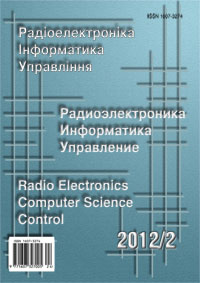SELFLEARNING FUZZY SPIKING NEURAL NETWORK BASED ON DISCRETE SECOND-ORDER CRITICALLY DUMPED RESPONSE UNITS FOR FUZZY CLUSTERING TASKS
DOI:
https://doi.org/10.15588/1607-3274-2012-2-23Keywords:
fuzzy clustering, spike, fuzzy spiking neural network, classical automatic control theory, second-order damped response units, pulse-position threshold detection system.Abstract
Hybrid neural networks based on the idea of combining spiking neural networks and the principles of fuzzy logic are considered. The architecture of self-learning fuzzy spiking neural network based on discrete second-order critically damped response units is proposed. It is proposed to define a spiking neural network in terms of apparatus of classical automatic control theory based on the Laplace transform and z-transform. It is shown that a spiking neural network is a pulse-position threshold detection system based on second-order damped response units. Such kind of description allows using it as an analog-digital system in technical problems solving. The output layer takes firing times of spikes arriving from the second layer, and either performs fuzzy partitioning of the input patterns using probabilistic approach.Downloads
Published
How to Cite
Issue
Section
License
Copyright (c) 2014 Y.V. Bodyanskiy, A.I. Dolotov, D.M. Malysheva

This work is licensed under a Creative Commons Attribution-ShareAlike 4.0 International License.
Creative Commons Licensing Notifications in the Copyright Notices
The journal allows the authors to hold the copyright without restrictions and to retain publishing rights without restrictions.
The journal allows readers to read, download, copy, distribute, print, search, or link to the full texts of its articles.
The journal allows to reuse and remixing of its content, in accordance with a Creative Commons license СС BY -SA.
Authors who publish with this journal agree to the following terms:
-
Authors retain copyright and grant the journal right of first publication with the work simultaneously licensed under a Creative Commons Attribution License CC BY-SA that allows others to share the work with an acknowledgement of the work's authorship and initial publication in this journal.
-
Authors are able to enter into separate, additional contractual arrangements for the non-exclusive distribution of the journal's published version of the work (e.g., post it to an institutional repository or publish it in a book), with an acknowledgement of its initial publication in this journal.
-
Authors are permitted and encouraged to post their work online (e.g., in institutional repositories or on their website) as it can lead to productive exchanges, as well as earlier and greater citation of published work.






